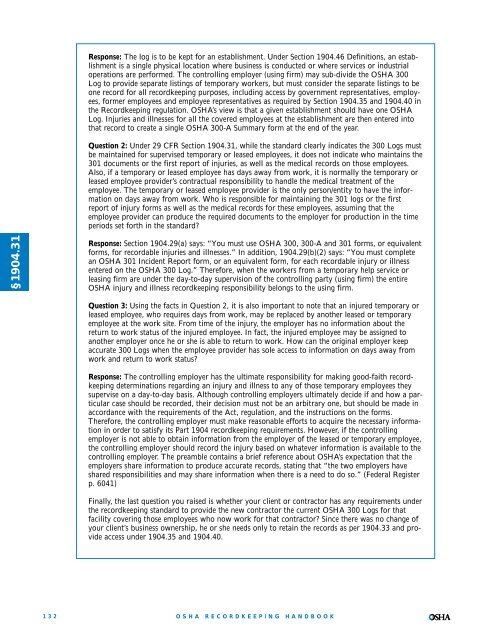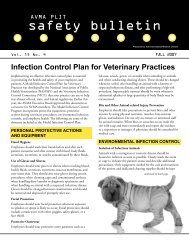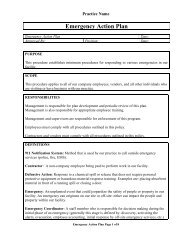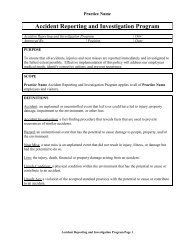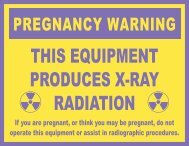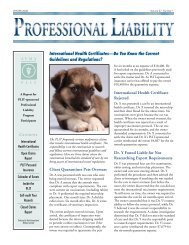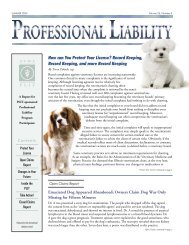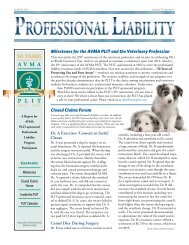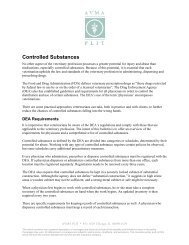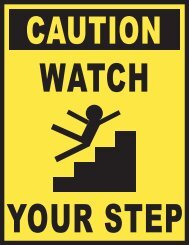OSHA Recordkeeping Handbook - denix
OSHA Recordkeeping Handbook - denix
OSHA Recordkeeping Handbook - denix
- No tags were found...
You also want an ePaper? Increase the reach of your titles
YUMPU automatically turns print PDFs into web optimized ePapers that Google loves.
Response: The log is to be kept for an establishment. Under Section 1904.46 Definitions, an establishmentis a single physical location where business is conducted or where services or industrialoperations are performed. The controlling employer (using firm) may sub-divide the <strong>OSHA</strong> 300Log to provide separate listings of temporary workers, but must consider the separate listings to beone record for all recordkeeping purposes, including access by government representatives, employees,former employees and employee representatives as required by Section 1904.35 and 1904.40 inthe <strong>Recordkeeping</strong> regulation. <strong>OSHA</strong>’s view is that a given establishment should have one <strong>OSHA</strong>Log. Injuries and illnesses for all the covered employees at the establishment are then entered intothat record to create a single <strong>OSHA</strong> 300-A Summary form at the end of the year.Question 2: Under 29 CFR Section 1904.31, while the standard clearly indicates the 300 Logs mustbe maintained for supervised temporary or leased employees, it does not indicate who maintains the301 documents or the first report of injuries, as well as the medical records on those employees.Also, if a temporary or leased employee has days away from work, it is normally the temporary orleased employee provider’s contractual responsibility to handle the medical treatment of theemployee. The temporary or leased employee provider is the only person/entity to have the informationon days away from work. Who is responsible for maintaining the 301 logs or the firstreport of injury forms as well as the medical records for these employees, assuming that theemployee provider can produce the required documents to the employer for production in the timeperiods set forth in the standard?§1904.31Response: Section 1904.29(a) says: “You must use <strong>OSHA</strong> 300, 300-A and 301 forms, or equivalentforms, for recordable injuries and illnesses.” In addition, 1904.29(b)(2) says: “You must completean <strong>OSHA</strong> 301 Incident Report form, or an equivalent form, for each recordable injury or illnessentered on the <strong>OSHA</strong> 300 Log.” Therefore, when the workers from a temporary help service orleasing firm are under the day-to-day supervision of the controlling party (using firm) the entire<strong>OSHA</strong> injury and illness recordkeeping responsibility belongs to the using firm.Question 3: Using the facts in Question 2, it is also important to note that an injured temporary orleased employee, who requires days from work, may be replaced by another leased or temporaryemployee at the work site. From time of the injury, the employer has no information about thereturn to work status of the injured employee. In fact, the injured employee may be assigned toanother employer once he or she is able to return to work. How can the original employer keepaccurate 300 Logs when the employee provider has sole access to information on days away fromwork and return to work status?Response: The controlling employer has the ultimate responsibility for making good-faith recordkeepingdeterminations regarding an injury and illness to any of those temporary employees theysupervise on a day-to-day basis. Although controlling employers ultimately decide if and how a particularcase should be recorded, their decision must not be an arbitrary one, but should be made inaccordance with the requirements of the Act, regulation, and the instructions on the forms.Therefore, the controlling employer must make reasonable efforts to acquire the necessary informationin order to satisfy its Part 1904 recordkeeping requirements. However, if the controllingemployer is not able to obtain information from the employer of the leased or temporary employee,the controlling employer should record the injury based on whatever information is available to thecontrolling employer. The preamble contains a brief reference about <strong>OSHA</strong>’s expectation that theemployers share information to produce accurate records, stating that “the two employers haveshared responsibilities and may share information when there is a need to do so.” (Federal Registerp. 6041)Finally, the last question you raised is whether your client or contractor has any requirements underthe recordkeeping standard to provide the new contractor the current <strong>OSHA</strong> 300 Logs for thatfacility covering those employees who now work for that contractor? Since there was no change ofyour client’s business ownership, he or she needs only to retain the records as per 1904.33 and provideaccess under 1904.35 and 1904.40.132<strong>OSHA</strong> RECORDKEEPINGHANDBOOK


